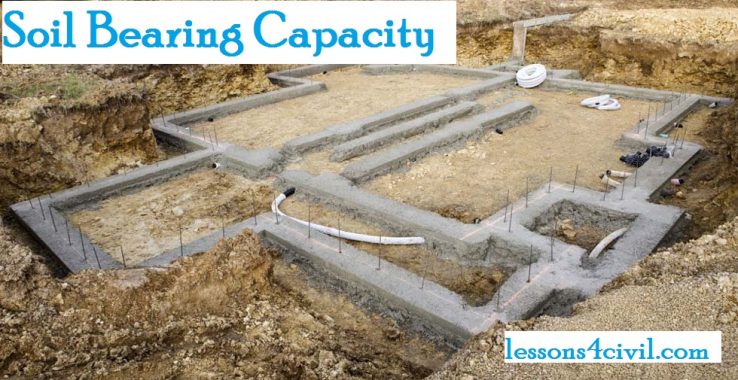Bearing Capacity of Soil?
In simple words, soil bearing capacity is the maximum load per unit area which is tolerable for soil without yielding or extreme deformation. It is a function of soil properties such as shear strength, density, permeability etc. The denser the soil is, the higher bearing capacity it has.
As it is obvious, all structures is built on soil. the weight of structure is required to distributed on a large surface of the soil to reduce stress to an allowable amount. foundations are structural members that reduce stresses and transfer them from the structure to the ground. The main purpose in designing a foundation is to restrict settlements and to prevent soil failure. The most frequently approach of foundation design is based on the concept of bearing capacity.
If the upper layers of soil are stiff enough to support the structure, designing a shallow foundation is suitable option. But if the upper layer is not strong enough, the loading must be transmitted to depth by deep foundations. Deep foundation is a general technical term for Piles, piers or wells.
Methods to estimate the bearing capacity of soil
However accurate measuring of soil bearing capacity is impossible, there are several methods to estimate it.
- Presumptive Analysis
- Analytical Methods
- Plate Bearing Test
- Penetration Test
- Modern Testing Methods
- Centrifuge Test
Ultimate VS allowable
Ultimate bearing capacity is the theoretical maximum pressure which can be tolerated without any failure, while allowable bearing capacity is computed based on some considerations such as the maximum allowable soil settlement. For example is the soil can still tolerate higher loads, but the settlement is threatening for occupants, the foundation design is not acceptable.
Most of equation suggested by scientists, such as Terzaghi’s Theory, is tailored for ultimate capacity of soil.



Comments